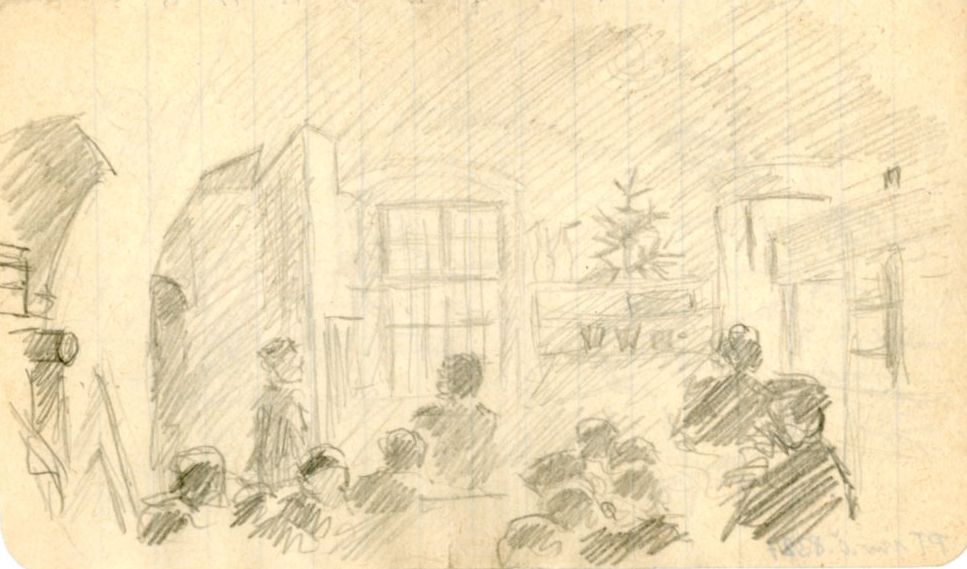
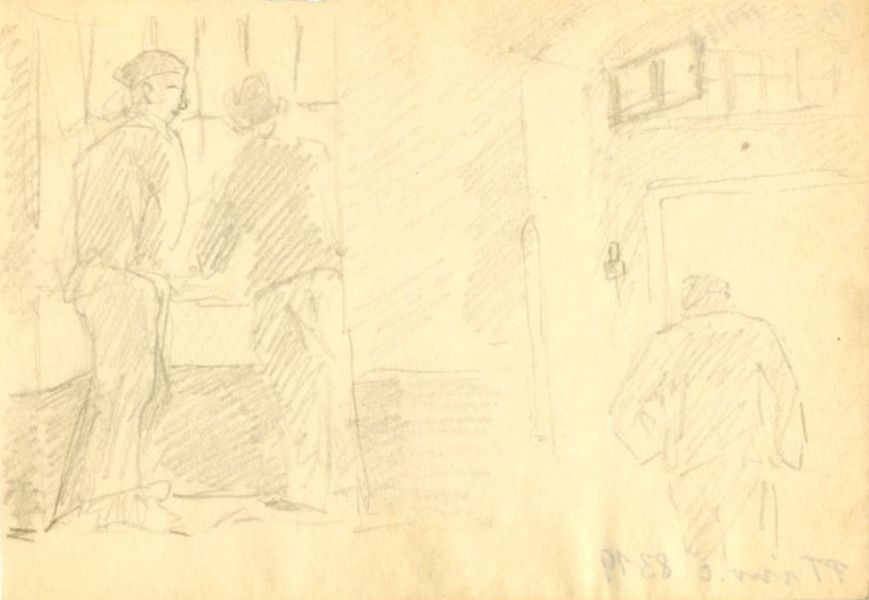
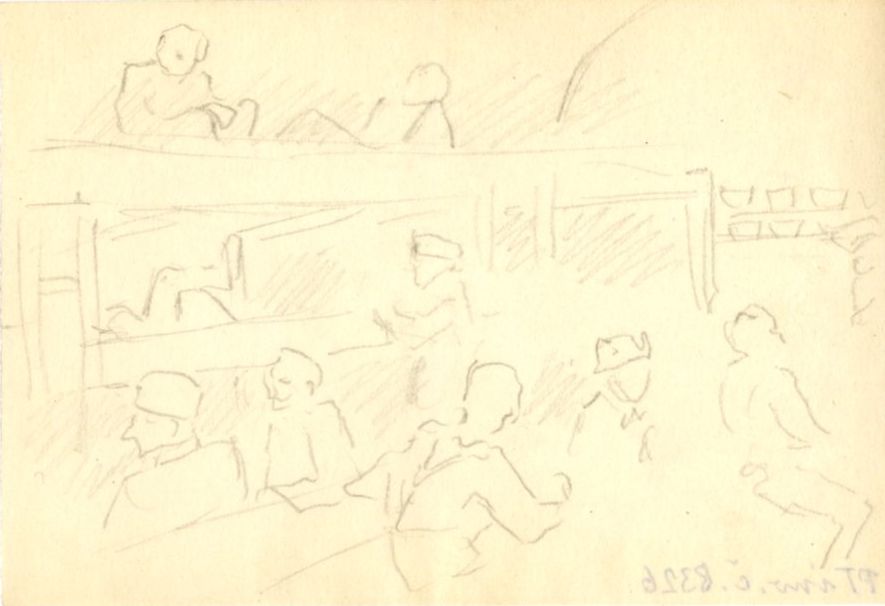
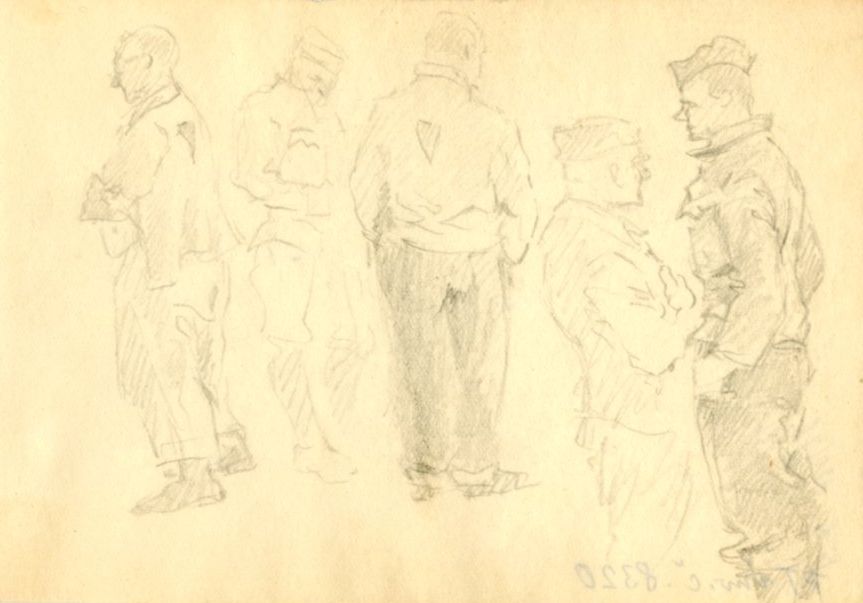
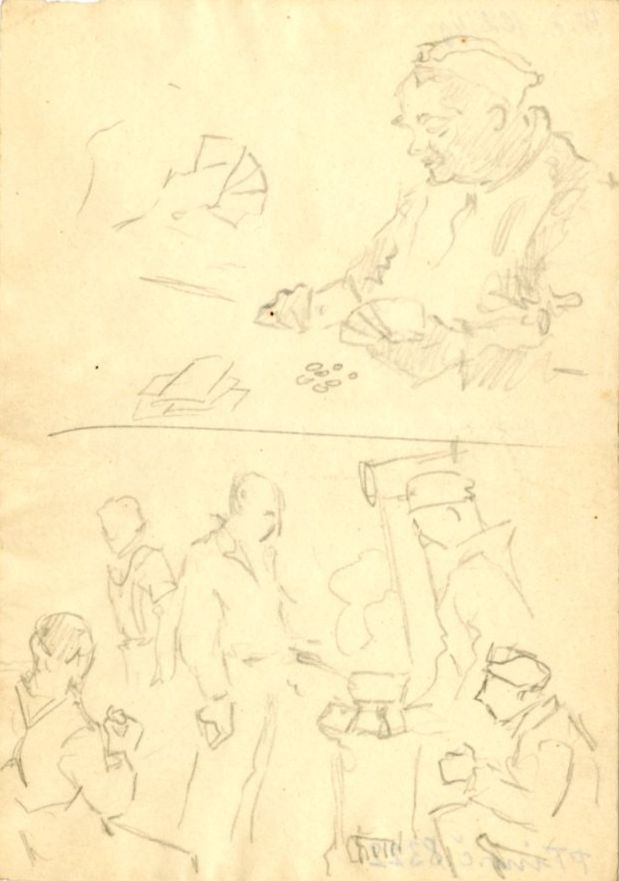


Artwork figured among Stanislav Kafka’s favorite pastimes. Since his youth he had a passion for drawing and painting that accompanied him throughout his life. He published his pictures in the Sokol magazines and produced illustrations for sports instructors’ handbooks and physical training textbooks for children. Last but not least, he painted just for the pleasure of creating, and often gifted some of his works to friends.
Immediately after the establishment of the Protectorate, Stanislav Kafka joined the anti-Nazi resistance. The genuine nature of his underground activities is unfortunately unknown. It was highly probable, though, that he was involved in the Sokol Union in Resistance, an organization that helped people wanted by the Germans to flee abroad. He stayed in touch with other resistance groups such as the Defense of the Nation, the Political Headquarters, and later, with the Petition Committee We Shall Remain Faithful. Martial law was declared after Reinhard Heydrich (1904–1942) took up the post of the acting Reich Protector. The crackdown on the Sokol organizations by the German security forces, also known as Operation Sokol (Aktion Sokol), was part of the martial law raids. The leading Sokol officials were rounded up on the night of October 7 and 8, 1941. Kafka was among those arrested by the Gestapo, seized in his flat in the early hours of October 8.
Stanislav Kafka and other detained officials were taken to the Petschke Palace for interrogation. He was then kept for some time in the Gestapo Police Prison in the Small Fortress in Terezín. During his time in prison, he managed to send his family several secret messages describing his forced labor deployment and the overall situation in the Fortress. Despite the dreadful living conditions, Kafka kept his passion for art alive, and the Terezín Memorial collection today keeps 14 of his drawings. Most of them are sketches of his fellow inmates or the interior of the cells. These are his last works. He left Terezín on a transport to the Auschwitz concentration camp on March 6, 1942. Moved to the Auschwitz II – Birkenau camp, he died there on April 4, 1942. Stanislav Kafka was survived by his wife Jaroslava, and two daughters, Stanislava and Jaroslava.